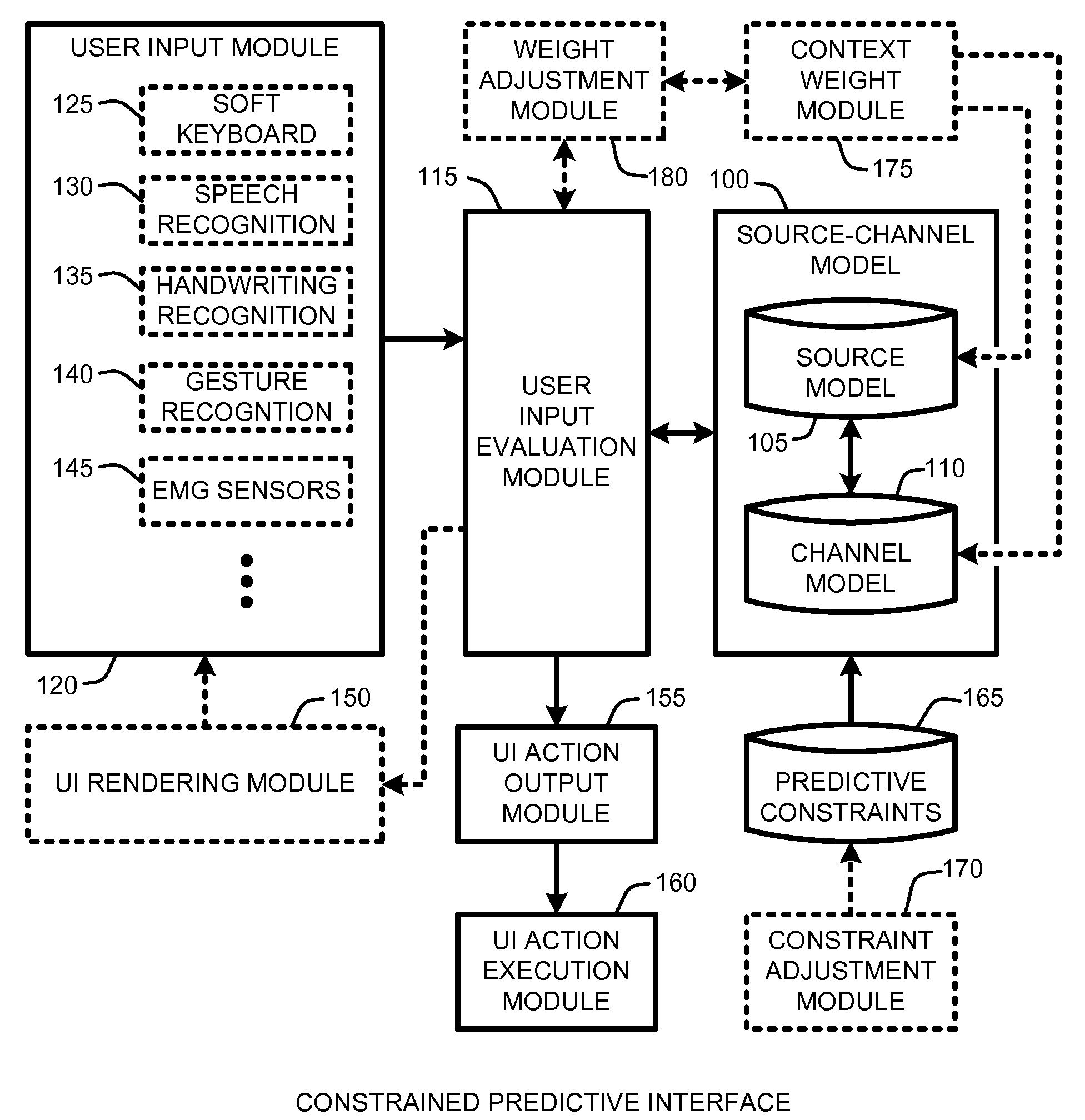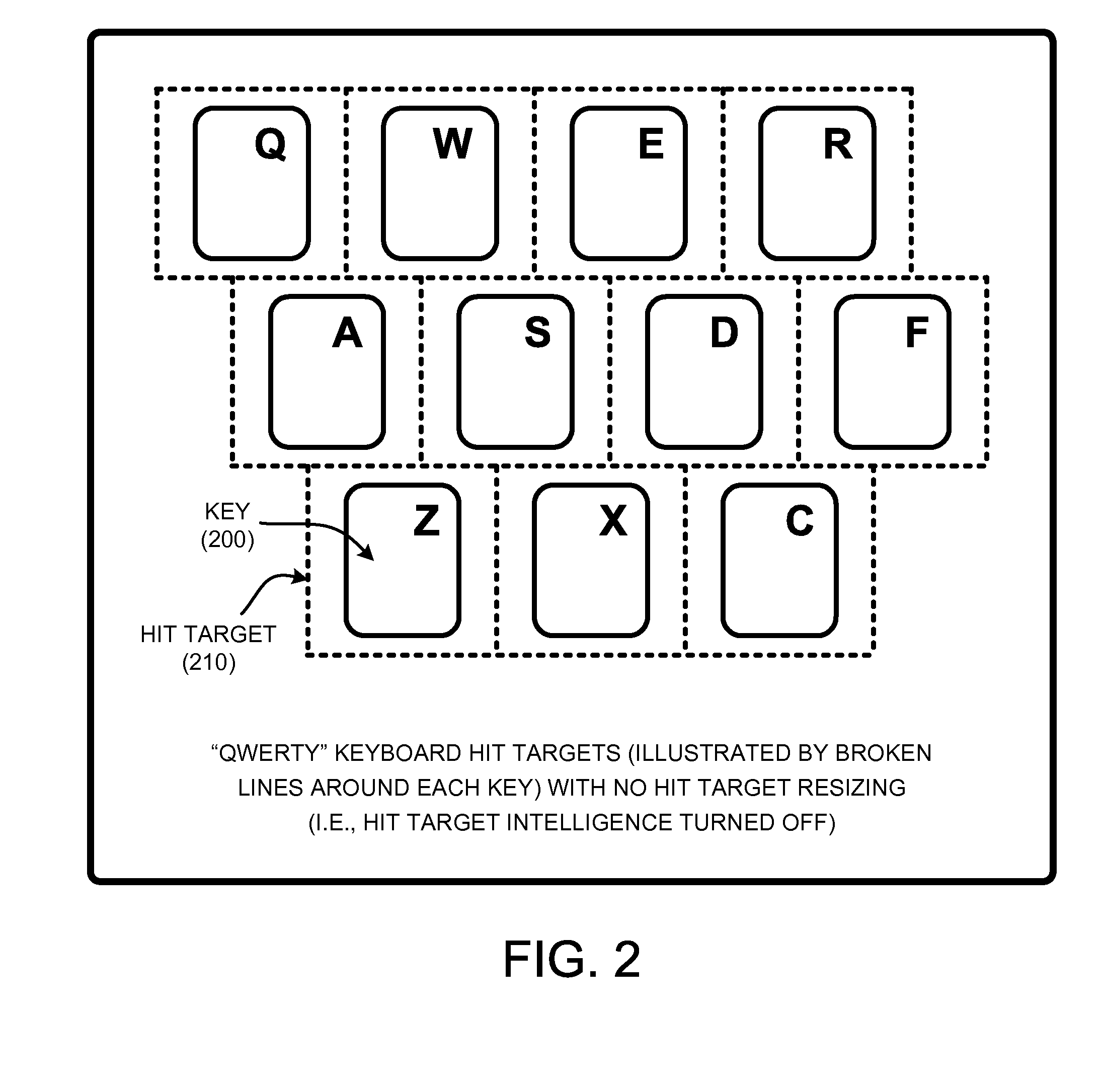Predictive interfaces with usability constraints
a predictive interface and usability constraint technology, applied in the field of constraints on predictive interfaces, can solve the problems of overly strict predictive models preventing users from selecting particular keys, single-tap systems still subject to ambiguity at the word level,
- Summary
- Abstract
- Description
- Claims
- Application Information
AI Technical Summary
Benefits of technology
Problems solved by technology
Method used
Image
Examples
Embodiment Construction
[0028]In the following description of the embodiments of the claimed subject matter, reference is made to the accompanying drawings, which form a part hereof, and in which is shown by way of illustration specific embodiments in which the claimed subject matter may be practiced. It should be understood that other embodiments may be utilized and structural changes may be made without departing from the scope of the presently claimed subject matter.
[0029]1.0 Introduction
[0030]In general, a “Constrained Predictive Interface,” as described herein, provides various techniques for using predictive constraints in combination with a source-channel predictive model to improve accuracy in a variety of user interfaces, including for example, soft or virtual keyboards, pen interfaces, multi-touch interfaces, 3D gesture interfaces, myoelectric or EMG based interfaces, etc. More specifically, the Constrained Predictive Interface provides various embodiments of a source-channel predictive model wit...
PUM
 Login to View More
Login to View More Abstract
Description
Claims
Application Information
 Login to View More
Login to View More - R&D
- Intellectual Property
- Life Sciences
- Materials
- Tech Scout
- Unparalleled Data Quality
- Higher Quality Content
- 60% Fewer Hallucinations
Browse by: Latest US Patents, China's latest patents, Technical Efficacy Thesaurus, Application Domain, Technology Topic, Popular Technical Reports.
© 2025 PatSnap. All rights reserved.Legal|Privacy policy|Modern Slavery Act Transparency Statement|Sitemap|About US| Contact US: help@patsnap.com



